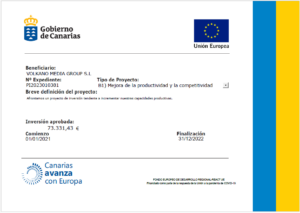Ultimately, we are powerless to control others anyway, and we cannot force them into recovery. Most family members have been trying to change their loved one for a long time, and it hasn’t worked. We are involved with other people, but we do not control them. We realistically cannot stop people from drinking alcohol or using drugs.
- “For a lot of people, learning to be assertive is a new and potentially uncomfortable skill set.
- Unfortunately, though, this well-meaning impulse can backfire tragically when addiction is part of the equation.
- Your compassion plus your boundaries will make the perfect balance for delivering your help, and you just might be planting that first seed towards their recovery.
- Reach out to a therapist or family support group for help, especially if you’re codependent on or enabling someone with SUD.
Sacrificing or struggling to recognize your own needs
It also means being responsible for our own recovery and making decisions without ulterior motives or the desire to control others. This is an obvious red flag that their alcohol or drug use is affecting you enough to cause pain, and they are unwilling to change their substance use. Talk to family members or loved ones about your concerns, and consider attending Al-Anon or another support group where everyone shares similar experiences and everything is kept confidential. He or she may gradually accept a self-concept that includes these negative traits, destroying self-esteem.
Careers – Join Our Team
Shame is another big barrier to changing your enabling behaviors. Chances are youve experienced judgment from others about your choices. It’s very easy for others to say, Why do you keep loaning him money? And on some level, you know that your enabling isnt helping (or maybe its even causing more problems). Understanding the myths surrounding enabling is a significant step toward fostering an environment conducive to recovery.
What is supportive behavior?
When this didn’t work, they started making excuses for him, explaining that his smoking was a coping strategy after a tough day. Neither shaming nor excusing helps a person change their behavior, and going back and forth between the two is even worse. If your loved one is dealing with alcohol misuse, removing alcohol from your home can help keep it out of easy reach. You may not have trouble limiting your drinks, but consider having them with a friend instead. They could say they’ve only tried drugs once or twice but don’t use them regularly.
Signs or characteristics of an enabler
Subsequently, the solid was redispersed in 10 mL ethanol, and then 4 mL Pt NPs solution (1.2 mM) was added drop by drop under stirring. Then the solid was centrifuged at 6000 × g and washed with ethanol several times. While there may be tough moments where you feel like you’re abandoning your loved one, not enabling is better for them — and you. Enabling can lead to codependency when the person enabling leans into the unbalance of the relationship in other ways, eventually becoming codependent.
1d, e indicates that such hydrogen spillover-promoted decomposition does not take effect in the Zr-UiO-66/Pt and Zn-ZIF-8/Pt systems. Codependency can signal an unhealthy relationship between two people, and it can often seem like one or both partners are “addicted” to the relationship. Enabling isn’t helpful for you or the partner, child, or friend you’re enabling.
It equips you with the knowledge to offer genuine support, paving the way for a healthier, substance-free future for your loved ones. As you continue exploring the intricacies of enabling, remember your actions and choices play a crucial role in the recovery landscape, and informed decisions are your most potent tool. Furthermore, the concept of enabling extends beyond the individual level. Societal structures and cultural norms can also play a role in sustaining addiction.
You might think recent hardships legitimately explain a loved one’s misbehavior, making excuses like «his new boss has been working him to the bone» or «she’s had a hard time since she got the college rejection letter.» This can take many forms, including paying a person’s rent or debt, lying to people about a loved one’s substance use, fixing their tickets or bailing them out of jail. A treatment center will attempt to verify your health insurance benefits and/or necessary authorizations on your behalf. Please note, this is only a quote of benefits and/or authorization. We cannot guarantee payment or verification eligibility as conveyed by your health insurance provider will be accurate and complete.
The relationship can turn codependent when the partner develops a pattern of sacrificing their time, needs, and sense of self for the other person. Enabling is when a person offers assistance https://rehabliving.net/ to a loved one that, rather than helping, actually reinforces an issue or unhealthy behavior. Giving the other person money allows them to continue engaging in destructive behavior.
They may work with you in exploring why you’ve engaged in enabling behaviors and what coping skills you can develop to stop those. They can also help you learn ways to empower, rather than enable, your loved one. A sign of enabling behavior is to put someone else’s needs before yours, particularly if the other person isn’t actively contributing to the relationship. You might put yourself under duress by doing some of these things you feel are helping your loved one. It doesn’t mean someone else’s harmful behaviors are on you, either. But even if all you want is to support your loved one, enabling may not contribute to the situation the way you might think it does.
He or she may gradually accept a self-concept that includes these negative traits, destroying self-esteem and rendering the person even less likely to suddenly do a 180 and become responsible and self-sufficient in the future. The enabled person may essentially be prevented from building the skills and motivation he or she needs in order to practice responsibility and reach his or her full potential. Because the enabler(s) will always solve problems for them, the enabled person does not learn how to solve their problems themselves. Enabling has the effect of releasing the enabled person from having to take responsibility for his or her behavior. Enabling means that someone else will always fix, solve, or make the consequences go away.
A 2019 article in the journal Personality and Social Psychology Bulletin highlights a fundamental need for relatedness in a relationship dynamic. She recommended working with a therapist to change these patterns and explore how they developed in the first place. Additionally, she shared some helpful reminders to keep in mind as you shift away from enabling. Delawalla similarly advised considering whose narrative you’re supporting and whether showing “support” requires you to compromise your own morals, well-being and/or relationships. The enabling version would be an adult who just ties the child’s shoelaces every time because they don’t want to deal with the frustrations and tantrums that arise in the learning process. Since deciding not to help someone in need can feel antithetical to loving them, it might be helpful to offer alternative expressions of care.
The enabled person may be exhibiting a range of poor choices with alcohol and drugs, ranging from abuse to addiction. This may also encompass poor choices around so-called “soft addictions” such as gambling, pornography, or excessive video gaming. He or she may refuse, or appear unable, to fulfill normative roles of adulthood. If a parent, he or she may underperform or disregard the responsibilities of parenthood. The enabled person often displays poor money management, as well as disorganized academic and/or career-planning choices. He or she may quit or be fired from a series of promising jobs and educational or training programs.
They may also feel that you’ll easily give in on other boundaries, too. You may try to help with the best of intentions and enable someone without realizing it. Support groups like Al-Anon may be useful for people whose loved ones are living with addiction. And talk therapy, Dr. Borland suggests, can be helpful for anyone who finds themselves in an enabling situation or who could benefit from developing assertiveness.
The concentration of as-synthesized Pt NPs solution was about 1.2 mM and used directly without further treatment. Codependency is a pattern of behaving in relationships where one partner compulsively strives to meet the needs of the other, even if it means compromising their own health, independence, or values. Here are some important things to know about enabling and codependency, as well as advice for replacing them with actions that will help you and your relationship thrive. Enabling and codependency often go hand in hand in relationships.
Their choices, their consequences, and what they do or don’t learn from them are all on their side of the boundary. You must accept that while your enabling behaviors come from a place of love, enabling is an ineffective way of solving problems at best; debilitating to all involved at worst. You may buy another day or prevent another emergency, but in the end, you are only postponing the real solution. Some who use the term “enabler” do so with https://rehabliving.net/the-risks-of-combining-oxycodone-and-alcohol/ a heavily negative judgment against the person who fulfills the role. It is commonly believed that enablers are knowingly, even willingly, complicit in the actions of the person they are enabling; that enablers support and condone the negative choices of the person they are enabling. It is less likely for an addict to seek professional drug abuse treatment when an enabler is there to provide means to make their drug or alcohol abuse easier.
In this case, an enabler is a person who often takes responsibility for their loved one’s actions and emotions. They may focus their time and energy on covering those areas where their loved one may be underperforming. In situ Zn K-edge X-ray absorption spectra (XAS) were collected at the 1W1B beamline of the Beijing Synchrotron Radiation Facility (BSRF) equipped with a Si (111) double crystal monochromator by transmission mode. The storage ring of BSRF runs at 2.5 GeV with a maximum electron current of about 250 mA.
But you also work full time and need the evenings to care for yourself. Missing out on things you want or need for yourself because you’re so involved with taking care of a loved one can also be a sign you’re enabling that person. Minimizing the issue implies to your loved one that they can continue to treat you similarly with no consequences.




